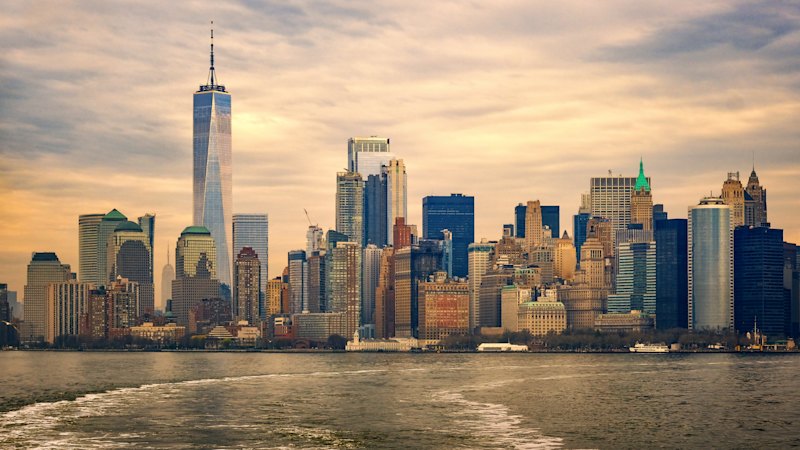
At 270 Park Avenue in midtown Manhattan, employees have moved into the immense new headquarters of JPMorgan Chase. The building boasts 232,000 square meters of office space and stands nearly 430 meters tall, rivaling the Empire State Building 1.6 kilometers to the south. Despite its imposing presence, the city beneath these towering spires is experiencing a significant transformation. For over two centuries, New York City has been synonymous with trading, banking, and money management, serving as a gateway to capital markets globally. However, the city is now facing a new challenge: “definancialisation.”
New York’s grip on the finance industry and its high-paying jobs is weakening, and it is losing its allure for the ultra-rich. This shift poses a threat to the city’s generous municipal welfare system, funded by some of the highest local taxes in America. The ultra-rich and the finance industry are on a collision course with the city’s new mayor, Zohran Mamdani, who aims to bolster the city’s tax-and-spend model to fund new social programs.
Decline in Financial Sector Employment
The share of New York City’s workforce employed in finance and insurance has been declining for years, dropping from 11.5% in 1990 to 7.7% in August. Of the 233,000 finance jobs created in the U.S. over the past five years, New York secured only about 19,000, trailing behind states like Texas, Florida, North Carolina, and Georgia. Despite JPMorgan’s new skyscraper, the bank employs more people in Texas than in New York.
Kathryn Wylde, head of the Partnership for New York City, attributes this decline to high costs and heavy taxes. New York State’s corporate income tax is 7.25%, but the city adds its own corporate income tax and a levy for the regional transport network, resulting in some businesses paying over 18% in local taxes. Additionally, stringent local regulations on hiring further burden financial firms, prompting them to relocate operations to more cost-effective locations.
Exodus of the Ultra-Rich
The departure of the ultra-rich from New York City has been accelerated by changes in federal tax laws. The 2017 Tax Cuts and Jobs Act capped the state and local tax (SALT) deduction at $10,000, significantly increasing taxes for high-earners in high-tax areas like New York. As a result, many wealthy individuals, including Paul Singer and Carl Icahn, have relocated to states like Florida.
According to the Citizens Budget Commission, New York state’s share of American taxpayers reporting over $1 million in income declined from 12.7% in 2010 to 8.7% in 2022.
This exodus has concentrated employment growth in lower-paid industries, such as health care and social assistance. Since 2019, New York has added over 268,000 jobs in these sectors, while overall employment increased by just 220,000. Without the health care industry, employment would have shrunk.
Housing and Cost of Living Pressures
The high cost of living in New York City is another factor driving both workers and the ultra-rich away. Housing costs are particularly burdensome, with the median monthly rent for an apartment at about $3,600, more than twice the average in America’s 50 largest cities. For poorer New Yorkers, rent consumes an increasing share of their income.
Households earning less than $70,000 spent 54% of their income on rent, compared to less than 40% in 1991.
The cost of housing is a headache for better-paid workers, too. The “Carrie Bradshaw index” suggests that locals would need to earn $151,600 to afford a studio apartment in 2024, 50% higher than in cities like Boston and San Francisco.
Potential Solutions and Future Prospects
Despite these challenges, there are glimmers of hope. The tech industry in New York City has grown, with employment rising by 64% between 2014 and 2024. Companies like Alphabet, OpenAI, and Anthropic have opened offices in the city, signaling potential for future growth.
Additionally, recent amendments to zoning laws, known as the “City of Yes,” aim to alleviate the housing crisis by allowing office-to-residential conversions and taller buildings near public transport. However, Mayor Mamdani’s proposal to freeze rents for rent-stabilized apartments could have unintended consequences, potentially discouraging new construction.
As New York City navigates these changes, the balance between maintaining a robust financial sector and addressing the needs of its residents will be crucial. Whether Mayor Mamdani’s policies can successfully address the city’s economic challenges remains to be seen. Ultimately, expanding the supply of affordable housing and fostering new industries will be key to ensuring New York City’s continued vibrancy and appeal.





